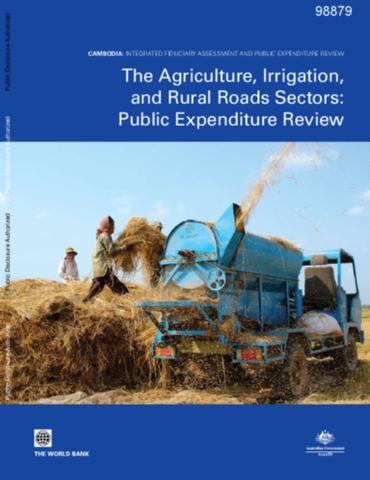The World Bank is a vital source of financial and technical assistance to developing countries around the world. We are not a bank in the ordinary sense but a unique partnership to reduce poverty and support development. The World Bank Group has two ambitious goals: End extreme poverty within a generation and boost shared prosperity.
- To end extreme poverty, the Bank's goal is to decrease the percentage of people living on less than $1.25 a day to no more than 3% by 2030.
- To promote shared prosperity, the goal is to promote income growth of the bottom 40% of the population in each country.
The World Bank Group comprises five institutions managed by their member countries.
The World Bank Group and Land: Working to protect the rights of existing land users and to help secure benefits for smallholder farmers
The World Bank (IBRD and IDA) interacts primarily with governments to increase agricultural productivity, strengthen land tenure policies and improve land governance. More than 90% of the World Bank’s agriculture portfolio focuses on the productivity and access to markets by small holder farmers. Ten percent of our projects focus on the governance of land tenure.
Similarly, investments by the International Finance Corporation (IFC), the World Bank Group’s private sector arm, including those in larger scale enterprises, overwhelmingly support smallholder farmers through improved access to finance, inputs and markets, and as direct suppliers. IFC invests in environmentally and socially sustainable private enterprises in all parts of the value chain (inputs such as irrigation and fertilizers, primary production, processing, transport and storage, traders, and risk management facilities including weather/crop insurance, warehouse financing, etc
For more information, visit the World Bank Group and land and food security (https://www.worldbank.org/en/topic/agriculture/brief/land-and-food-security1
Resources
Displaying 561 - 565 of 4906Linking Farmers and Agro-processors to the Tourism Industry in the Eastern Caribbean
The main objective of this Economic and Sector Work (ESW) is to identify opportunities for stronger linkages between domestic agricultural supply chains and the tourism sector in the OECS, and to outline priority interventions with potential to strengthen these linkages. Since this topic has been analyzed in a number of studies, the approach for this ESW is not to conduct yet another comprehensive study.
Doing Business Economy Profile 2016
Implementation of the Land Governance Assessment Framework (LGAF) in the Republic of Croatia (English)
The Land Governance Assessment Framework (LGAF) is a diagnostic tool to assess the status of land governance at country level using a participatory process that draws systematically on existing evidence and local expertise rather than on outsiders.
Land Governance Assessment Framework (LGAF) implementation in Ethiopia : final country report (English)
The Land Governance Assessment Framework (LGAF) is a diagnostic tool to assess the status of land governance at country level using a participatory process that draws systematically on existing evidence and local expertise rather than on outsiders.
Cambodia
This report focuses on areas with highest potential efficiency gains to increase the value for money from investments in core public goods and services such as extension, irrigation and rural roads. This is a first attempt to carry out such an analysis in Cambodia, and even in the Greater Mekong sub-region. Based on extensive data gathering and surveys, this chapter analyzes the efficiency and effectiveness of agricultural sector expenditures in Cambodia and assesses various options for increasing the impact of government expenditures on agricultural growth.










